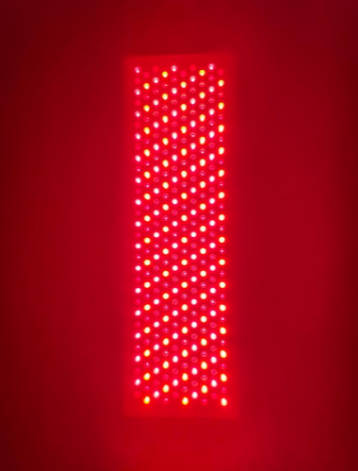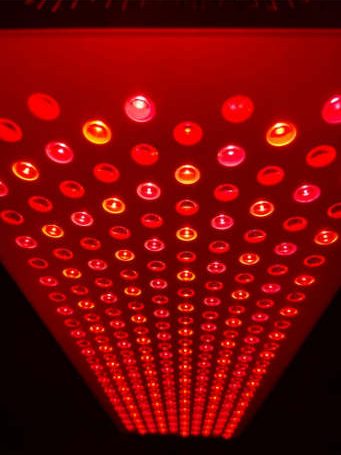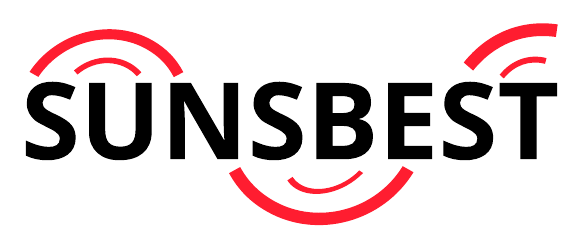It feels like a significant discovery that I’ve made: using red and near-infrared light daily. Typically, I would thoroughly research such a topic before publishing about it. Such processes can sometimes take years, as I’ve experienced with some of the books I have written. However, this time, I’m approaching it differently and taking you along on this journey.
I have extensively researched the subject of red and near-infrared light and have gained personal experience with it. However, I am not yet at a point where I can write a comprehensive book about it. I could wait until I have enough material to create a deep and well-researched book and engage in interesting discussions on online talk shows. But the topic is too important to wait. Hence, this blog. Here, you will find everything I currently know about light. As I learn more, I will write follow-ups.
The Best of the Sun
Intuitively, we all know that the sun is vital for our health. We also know that we need to be cautious with the sun. Sunburn, skin aging – the sun has its drawbacks, especially in our part of the world during autumn and winter. This has caught the attention of the scientific community, which has been studying this topic since the 1930s, with accelerated research since the 1960s. While all the details, facts, and sources will follow, it’s interesting to know that research has clearly identified which light frequencies are most beneficial to us humans. Subsequently, techniques have been developed to program these wavelengths into LED lamps. This way, you can enjoy the best elements of the sun every day of the year while avoiding the adverse effects.
I strive to get to the essence, often leading me to nature. I have published a book on ancient wisdom and current science on health and nutrition. It has become a theme in my life to discover and rediscover ancient knowledge about health and see how it aligns with the latest scientific insights. Practically, this often results in a deeper appreciation and respect for nature and the natural self-healing abilities bestowed upon us, along with an interest in how modern knowledge and technology can support nature and those abilities. This has led me, for example, to working under daylight lamps, using red and blue light in my mouth, disinfecting small objects with UV and ozone, and wearing blue light-filtering glasses. You will hear more about all these topics from me in the future, but first, let me share what I have discovered about red and near-infrared light, also known as near-infrared light.

Red Light Therapy
During my (ongoing) research on red light, I encountered numerous pitfalls and challenges that I had to overcome. However, I also discovered the most extraordinary properties, which resonate deeply with me because red light gets to the essence. This is a common thread in my work and in my life – to delve into the essence of the subjects that interest me. By striving to find the source in each investigation, I embark on what I believe to be a good and healthy, almost spiritual path. One that leads to depth and often to respect and awe for nature and its intelligence.
It doesn’t get much more fundamental than light, just like air and water. Light is of fundamental importance. Without these elements, we are lost. Therefore, it is essential to understand them as well as possible. Intuitively, we already know how important the sun is, and rationally, we recognise that the sun is the centre of our universe for a reason. However, we are still making strides in our knowledge and technology regarding this. One crucial step is red light therapy.
Incredible Amounts of Light
Red light can have a significant impact on a person. When you consider the research and findings, including the experiences of athletes and models, you can understand the statement made by Harvard Professor Hamblin, one of the leading experts in this field, that he expects every household to have a light panel in the coming years. In my case, I’m already there.
Recently, I have been bathing in the light of a panel with small LED lights that collectively emit an unimaginable amount of light, photons, and energy towards me. To put it into perspective, imagine an old-fashioned 30-watt light bulb that allows you to read a book, a 60-watt bulb that lets you read your favourite magazine in the bathroom, and a 100-watt bulb that illuminates an entire room. My red light panel emits 1500 watts through 300 LED lights. This has proven to be a good idea because, according to science, it can promote health in numerous ways. Red and near-infrared light can benefit a person significantly when they take a ten-minute bath in it daily. That’s what I do, and research indicates that it greatly benefits my health.
In the unprocessed photo I took of the panel, you can see that some lights shine less brightly. This is due to the fact that the camera, like the human eye, is not adept at detecting near-infrared light. It is this light that penetrates deep into the body and stimulates the mitochondria to produce more energy.

The Health-Promoting Properties of Red Light
- Red light and near-infrared light have several remarkable properties. These rays not only work on the surface of the skin but also penetrate beneath it. When the light shines on you, it feels pleasant due to its overwhelming effect on the body and mind, as well as its warmth. However, the benefits continue even after the light exposure.
- The light promotes energy production in your body. The mitochondria, which are the energy factories in your cells, do not all function equally well. As we age, our energy levels decline. Red light intervenes in this downward trend by providing a significant boost to the mitochondria, allowing them to function more effectively and produce more ATP, the energy currency of our bodies. Having sufficient ATP is crucial for the proper functioning of our cells and their various tasks.
- The light stimulates collagen production. After several months of red light exposure, users report having a more radiant appearance, partly due to increased collagen production, which reduces wrinkles. Collagen production naturally declines starting around the age of twenty-five, but this trend can be reversed by providing your body with more energy. Collagen production is not only beneficial for cosmetic effects but also plays an important role in heart and vascular health, contributing to overall longevity and vitality.
- Serious athletes understand the significance of muscle recovery. Training and damaging muscles are one aspect, but rest and recovery afterward are equally important. Light, especially near-infrared light (NIR), can contribute to this process. It provides a positive impact both before and after physical activity.
- Expect a reduction in scars, joint discomfort, and the general aches that accompany aging. This is partly because light combats inflammation. It’s worth noting that many modern lifestyle diseases are fundamentally inflammatory diseases.
- Increased testosterone levels are beneficial for both men and women. The natural decline in testosterone should be slowed down, and ideally, the testosterone levels should be significantly increased. Light can assist in this process. Men, in particular, should direct the light to their chest and groin areas, which also stimulates blood circulation, something that can benefit women as well.
- Red light promotes better sleep and facilitates recovery from the daily toll on our health. The light gives a kickstart to the day, or at least it feels that way, suggesting that the orange-red light we associate with sunrises and sunsets might have a positive function that we often miss in our modern lives. I’m intrigued by the potential positive impact of stimulated mitochondria on melatonin, the hormone that helps us sleep better. While I’m not entirely certain, I genuinely believe that I have been sleeping more deeply since using the light.
- The light may have a positive influence on the microbiome. A key element of good physical and mental health is the quality and diversity of the bacteria in and around your gut. They benefit from the light, so I’m curious to see how the rays illuminate my abdomen.
- The previously mentioned mitochondria may play a role in the mystery surrounding red light. What is not yet entirely clear is how the light not only has a positive effect on the exposed body part but also potentially benefits other areas. It might be due to the blood circulating throughout the body, but it could also involve the mitochondria. These energy powerhouses can move outside the cells and perform their beneficial work elsewhere.
- The light panels emit a pleasant warmth. This enhances the already enjoyable experience, and I can imagine that the light and gentle warmth have a positive impact on my well-being during the autumn and winter seasons. Additionally, in summer, the illuminated skin is better protected against the sun.
- Research is being conducted with light-emitting helmets to study the effects on Parkinson’s and Alzheimer’s diseases. This made me think of another disease in which mitochondria play a prominent role: Huntington’s disease. For individuals with these diseases, I wonder if it would be wise for them to stand in front of a light panel or wear a light helmet. I’m very curious about this. There is still much to discover about red light, as approximately five thousand studies have been conducted on this subject.
- It is unclear what effect the intense red glow emitted by the panels might have on the surrounding environment. However, waiting longer than necessary at a red traffic light in the hope of improving your health is not productive. Red light exposure will not give you a tan or produce vitamin D3.
- The light has long been the focus of scientific interest and has been described using various terms, such as photo-biomodulation (PBM), bio photon therapy, PDT therapy (short for photodynamic therapy), photon stimulation, bio light therapy, LLLT (low-level laser therapy), and, of course, red light therapy (RLT).
Pitfalls
Once you learn more about it, it is not immediately easy to find a suitable red light panel, despite the wide range of options available. There are several pitfalls to be aware of:
Some light frequencies are more beneficial than the two commonly offered frequencies. My panel has five frequencies that impressed me due to their properties.
Light intensity often falls short. However, my panel consists of three hundred of the most powerful LEDs available, delivering an impact greater than that of the sun when positioned within fifteen centimeters of the panel.
The angle of the light is also important. Therefore I chose lenses that precisely direct the light towards me.
It is essential to avoid panels with grow lights that are only suitable for plant growth. Additionally, it is important to be mindful of the invisible but unhealthy flickering effect that some lights may have. In my case, the lights do not flicker or emit harmful electromagnetic radiation.
The device itself is made of sturdy metal, weighs over seven kilograms, is seventy centimeters in size, and consumes 350 watts of power, which costs approximately 25 cents per month if used daily for 10 minutes. The panel includes a timer for relaxed sessions and the option to connect other panels, which may come in handy in the future. Currently, I lower the panel using the provided pulley system to target areas of my body that are lower in position.

In practical use
I immerse myself in the light. That’s the feeling I get when the light is on. It is a blessing during these dark times, providing a safe way to recharge my body and mind, as if I were metaphorically sticking my fingers into an electrical socket. I can conscientiously eat, take the right supplements, engage in physical activity, and now, even in autumn and winter, I can use healthy light to further support myself.
In the morning, the light gives the impression that the curtains are suddenly opening on a sunny day. Sometimes, it can be overwhelming. I often position my back to receive the first rays, allowing my eyes to gradually adjust to the intense light. Later, I turn with closed eyes and my head held high, gradually lowering my head until I’m looking straight ahead.
This way, the transition to the intense light is gradual. I keep my eyes closed and, with the light and warmth, it feels as though I’m lying on a warm summer day at the beach. Sometimes, I open my mouth (which I believe can have benefits) or position a painful shoulder towards the light. I allow the side of my face to be illuminated or raise a hand to expose it to the light. Occasionally, while enjoying the light, I make phone calls with my earphones on or read a book while standing or sitting, with the light behind me, or go through the messages on my phone.
Light in Your Life
The panel I describe in this blog was custom-made to meet all of my requirements. Surprisingly, I received many positive responses from people who read about it or experienced the light at my home. They wanted to have access to it themselves, so I made that possible. I now offer the same panel I have, as well as larger and smaller models, under my own brand.
